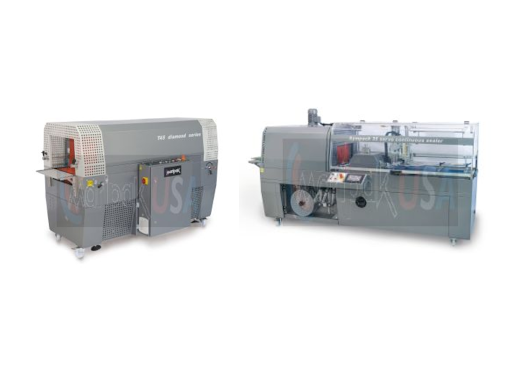Shrink Wrappers Machines Maintenance and Handling Guide

Maintaining and properly handling an industrial shrink wrap machine is crucial for ensuring efficient operation and longevity. Regular maintenance not only enhances the performance of your machine but also helps prevent costly downtime. This guide provides essential tips and best practices for maintaining and handling shrink wrappers to keep your packaging operations running smoothly.
Regular Maintenance Procedures
1. Daily Maintenance
- Clean the Machine:
- Wipe down all surfaces with a damp cloth to remove dust, debris, and residue from the shrink wrap film.
- Pay special attention to the sealing bar and heat elements, ensuring they are free from any build-up.
- Inspect the Film Roll:
- Check the film roll for any tears or irregularities that could cause issues during wrapping.
- Ensure the film roll is correctly positioned and tensioned.
- Test the Seals:
- Run a few test cycles to ensure the seals are consistent and strong.
- Adjust the sealing temperature or pressure if necessary.
2. Weekly Maintenance
- Lubricate Moving Parts:
- Apply lubricant to all moving parts, including the conveyor, rollers, and sealing bars.
- Use a manufacturer-recommended lubricant to avoid damage.
- Check Electrical Connections:
- Inspect all electrical connections for signs of wear or loose wires.
- Ensure all connections are secure and free from corrosion.
- Examine Heating Elements:
- Inspect the heating elements of shrink wrappers for signs of wear or damage.
- Replace any elements that are not heating evenly or are showing signs of burnout.
3. Monthly Maintenance
- Deep Clean:
- Perform a more thorough cleaning of the machine, including the interior components.
- Remove any built-up dust or debris that could affect performance.
- Inspect Belts and Chains:
- Check belts and chains for tension and signs of wear.
- Replace any worn or damaged belts or chains to prevent breakdowns.
- Calibration:
- Calibrate the machine’s sensors and controls to ensure accurate operation.
- Follow the manufacturer’s guidelines for proper calibration procedures.
Handling Best Practices
1. Operator Training
- Proper Training:
- Ensure all operators are properly trained on the correct use and handling of the industrial shrink wrap machine.
- Provide regular refresher training to keep operators updated on best practices and safety procedures.
- Safe Operation:
- Emphasize the importance of following safety protocols, such as wearing appropriate protective gear and avoiding loose clothing that could get caught in the machine.
- Teach operators to recognize warning signs of potential issues and how to respond appropriately.
2. Correct Loading and Unloading
- Load Products Properly:
- Ensure products are loaded onto the conveyor or infeed correctly to prevent jams and uneven wrapping.
- Use guides and alignment tools of shrink wrappers to position products accurately.
- Unload Safely:
- Carefully remove wrapped products from the outfeed, ensuring not to damage the seals or wrapped film.
- Avoid stacking wrapped products in a way that could cause them to topple or become damaged.
Troubleshooting Common Issues
1. Inconsistent Seals
- Check Sealing Bar:
- Ensure the sealing bar is clean and free from residue.
- Adjust the temperature or pressure settings if the seals are weak or uneven.
- Inspect Film Quality:
- Use high-quality shrink wrap film that is compatible with your machine.
- Check for any defects in the film that could cause sealing issues.
2. Film Tearing
- Adjust Tension:
- Ensure the film is properly tensioned to prevent tearing during wrapping.
- Reduce the tension if the film is tearing consistently.
- Examine Roll Placement:
- Ensure the film roll is positioned correctly and is feeding smoothly into the machine.
- Adjust the alignment if necessary.
3. Machine Jamming
- Clear Jams Promptly:
- Stop the machine immediately if a jam occurs and clear the obstruction safely.
- Inspect the machine for any damage caused by the jam and address it before resuming operation.
- Regular Inspections:
- Conduct regular inspections to identify and address potential causes of jams, such as debris buildup or misaligned components.
Conclusion
Proper maintenance and handling of an industrial shrink wrap machine are essential for optimal performance and longevity. By following these maintenance procedures and handling best practices, you can ensure your machine operates efficiently and reliably. Regular inspections, operator training, and timely troubleshooting will help you avoid downtime and maintain a smooth packaging process.



